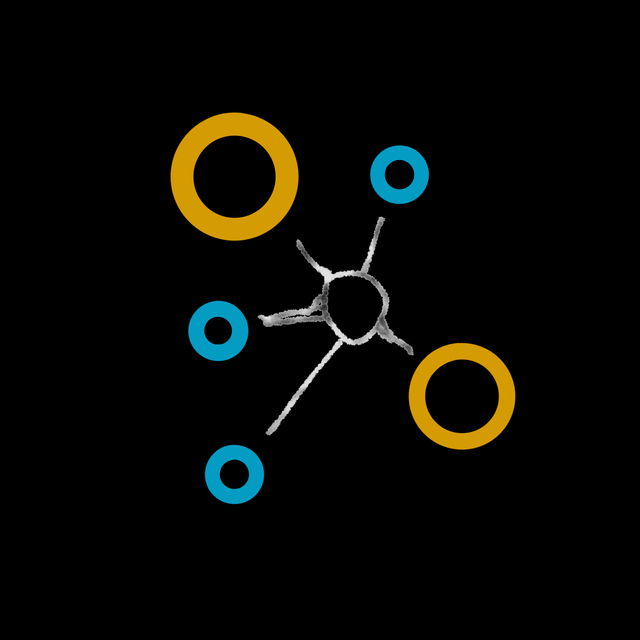THE ACA-BASED PID CONTROLLER FOR ENHANCING A WHEELED-MOBILE ROBOT
##plugins.themes.academic_pro.article.main##
Abstract
Wall-following control of mobile robot is an important topic in the mobile robot researches. The wall-following control problem is characterized by moving the robot along the wall in a desired direction while maintaining a constants distance to the wall. The existing control algorithms become complicated in implementation and not efficient enough. Ant colony algorithm (ACA), in terms of optimizing parameters, has a faster convergence speed and features that are easy to integrate with other methods. This paper adopts ant colony algorithm to optimize PID controller, and then selects ideal control parameters. The simulation results based on MATLAB show that the control system optimized by ant colony algorithm has higher efficiency than the traditional control systems in term of RMSE.
##plugins.themes.academic_pro.article.details##

This work is licensed under a Creative Commons Attribution-NoDerivatives 4.0 International License.
References
- Mohamed, A., El-Gindy, M., & Ren, J. (2018). Advanced control techniques for unmanned ground vehicle: literature survey. International journal of vehicle performance, 4(1), 46-73.
- Kai, Z., Shengjin, L., & Juan, S. (2013). Research on Improved Ant Colony Algorithm in mobile robot path planning [J]. Microcomputer and application, 32(4), 67-70.
- Mu, Y. Z., Dong, C. Y., Chen, Q. M., Li, B. C., & Fan, Z. Q. (2020, April). Research on Navigation and Path Planning of Mobile Robot Based on Vision Sensor. In Proceedings of the 2020 6th International Conference on Computing and Artificial Intelligence (pp. 519-524)
- Bin-Qiang, Y., Ming-Fu, Z., & Yi, W. (2011, July). Research of path planning method for mobile robot based on artificial potential field. In 2011 International Conference on Multimedia Technology (pp. 3192-3195). IEEE.
- Zhang, H. D., Zheng, R., & Cen, Y. W. (2005). Present situation and future development of mobile robot path planning technology. Acta Simulata Systematica Sinica, 17(2), 439-443.
- Xin, Y., Liang, H. W., Du, M. B., Mei, T., Wang, Z. L., & Jiang, R. H. (2014). An improved A* algorithm for searching infinite neighbourhoods. Robot, 36(5), 627-633.
- Jian-Ying, Z. H. A. N. G., & Tun, L. (2007). Optimized path planning of mobile robot based on artificial potential field. Acta Aeronaut. Astronaut. Sinica, 28(2), 183-188.
- Jing, Y., Jiao, M., Chen, Y., Zheng, W., Huang, J., & Niu, B. (2020, July). Mobile Robot Path Planning Based on Improved Ant Colony Optimization Algorithm. In 2020 39th Chinese Control Conference (CCC) (pp. 1559-1564). IEEE.
- Wang, G., Wang, H., Li, Z., & Li, J. (2019). Path planning for mobile robots based on optimized genetic algorithm. Machine Tool & Hydraulics, Papers, 47(03), 44-47.
- Zhi-yong, C. H. E. N. (2017). Research on Multi-objective Vehicle Route Program Based on IPSO Algorithm. Journal of Shandong Agricultural University (Natural Science Edition), 02..
- Yang, J. C., Li, S. X., & Cai, Z. Y. (2017). Research and development of path planning algorithm [J]. Control engineering, 24(07), 1473-1480. (in Chinese)
- HAN, Y., ZHANG, L., TAN, H., XUE, X., GUO, R., & GUO, Q. Mobile robot path planning based on improved particle swarm optimization algorithm.
- Gao, T. T., Zhang, L., Li, B. D., & GAO, Q. (2016). Study on path planning of soccer robot based on improved particle swarm algorithm. Journal of Xi’an Polytechnic University, 30(5), 609-615. (in Chinese)
- Cui, R., Li, Y., & Yan, W. (2015). Mutual information-based multi-AUV path planning for scalar field sampling using multidimensional RRT. IEEE Transactions on Systems, Man, and Cybernetics: Systems, 46(7), 993-1004.
- Liu, C., Han, J., & An, K. (2017). Dynamic path planning based on an improved RRT algorithm for RoboCup robot. Robot, 39(1), 8-15. (in Chinese)
- Zhenghua, H., Qiubo, Z., Chunya, T., & Kuai, W. (2017, August). Application of rapidly exploring random tree algorithm in the scene of road network with scheduled tracks. In 2017 2nd International Conference on Advanced Robotics and Mechatronics (ICARM) (pp. 311-315). IEEE.,
- Zhao, X., Wang, Z., Huang, C. K., & Zhao, Y. W. (2018). Mobile robot path planning based on an improved A* algorithm. Robot, 40(6), 903-910. (in Chinese)
- Guruji, A. K., Agarwal, H., & Parsediya, D. K. (2016). Time-efficient A* algorithm for robot path planning. Procedia Technology, 23, 144-149.
- Wang, L., Li, M., Tang, D. B., & Cai, J. (2016). Dynamic path planning for mobile robot based on improved genetic algorithm. Journal of Nanjing University of Aeronautics and Astronautics, 48(6), 841-846. (in Chinese)
- Song, B., Wang, Z., & Sheng, L. (2016). A new genetic algorithm approach to smooth path planning for mobile robots. Assembly Automation.
- Das, P. K., Behera, H. S., & Panigrahi, B. K. (2016). A hybridization of an improved particle swarm optimization and gravitational search algorithm for multi-robot path planning. Swarm and Evolutionary Computation, 28, 14-28.
- Yin, H. P., & Chai, Y. (2007). Parameters optimization design of PID controller based on ant colony algorithms. Jisuanji Gongcheng yu Yingyong(Computer Engineering and Applications), 42(17), 4-7..
- Jacknoon, A., & Abido, M. A. (2017, January). Ant Colony based LQR and PID tuned parameters for controlling Inverted Pendulum. In 2017 International Conference on Communication, Control, Computing and Electronics Engineering (ICCCCEE) (pp. 1-8). IEEE.
- Suwoyo, H., Tian, Y., Deng, C., & Adriansyah, A. (2018, October). Improving a wall-following robot performance with a PID-genetic algorithm controller. In 2018 5th International Conference on Electrical Engineering, Computer Science and Informatics (EECSI) (pp. 314-318). IEEE


 https://ijeeemi.poltekkesdepkes-sby.ac.id/pages/pulsayuk/
https://ijeeemi.poltekkesdepkes-sby.ac.id/pages/pulsayuk/
